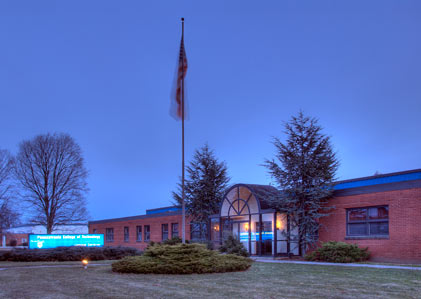Commercial Climate Control
Commercial climate control includes a multitude of situations, with appliances, devices, and systems customized to fit each requirement.
Office buildings have different requirements than hospitals, manufacturing plants, convention centers, greenhouses, and other facilities. All of the climate control functions listed in the introduction to this blog are needed to a greater or lesser extent in one or more commercial applications. For example, motels and restaurants need ice machines; grocery stores need coolers and freezers; and public buildings need refrigerated air circulating. Each requires different climate control appliances to meet their needs.
Commercial climate control appliances come in all types and sizes. Some commercial climate control appliances are small and portable, but most are very large permanent installations. Some fill up basement equipment rooms, and others cover rooftops.
Installation of commercial climate control equipment can involve a variety of gauges, valves, or motors as well as complex wiring and water or gas lines. Some run continually, and others operate sporadically. Huge fans can quickly replace hundreds of cubic feet of stale air with fresh air. Air handling units, chillers, boilers, and other climate control equipment that weigh hundreds of pounds can heat or cool thousands of square feet.
The following examples include a variety of commercial climate control appliances, equipment, devices, and systems. The examples are by no means exhaustive, rather, they are representative of commercial climate control installations.
Hospital Climate Control
Hospitals typically have a huge variety of climate control appliances, equipment, and devices that include heating, cooling, (de)humidification, and air purification.
Most of the climate control appliances are giant units that are permanently installed, although certain areas may have small permanent installations or portable appliances. There are varied conditions for rooms across a healthcare facility:
- Rooms for patients need to be kept at temperatures and levels of humidity that help patients heal. A patient in one room may need different climate control than a patient in another room.
- The operating room has to be comfortable for medical personnel working under bright lights in stressful conditions.
- Lobby areas and offices have other climate control needs.
- There are boiler rooms and other equipment areas, kitchens, pharmaceutical storage, and in some facilities, a temporary morgue, all of which need differing levels of climate control.
Ventilation—along with filtration and purification equipment to prevent the spread of infection—is essential in all areas. Because climate control in a hospital is critical, there are often redundant and backup appliances in such settings. Equipment is frequently integrated with generators to prevent failures in emergencies.
Data Center Climate Control
Computers and peripherals generate tremendous amounts of heat and equipment failure in IT can be caused by inadequate or broken air conditioning. Although the units themselves have heat sinks and interior fans, refrigeration appliances for climate control are essential to any data center. Heat dissipation requires additional cold air and ventilation. Humidifiers and dehumidifiers are also essential.
The data center may be a dedicated room in an office building with the specialized climate control needs met by the building climate control system. Colocation (“colo”) centers are massive data centers that provide electronic, telecommunication, document storage, and connectivity services to a variety of clients.
Although human life doesn’t depend on climate control in a colo as it does in a hospital, climate control is essential to keep the buildings at optimum temperature and humidity to preserve data. Buildings dedicated to colos will have large and permanent air conditioning and ventilation equipment connected to reliable power sources for climate control. Because access to data is required around-the-clock, many data centers will also install failsafes to ensure that temperature and humidity control continues, even when grid power pauses or fails.
Agricultural Climate Control
Many agricultural operations include greenhouses that need specific levels of humidity and circulating air to keep plants growing. Some greenhouses need the addition of heating or cooling to overcome outside temperatures.
Indoor agriculture, with closed-system year-round growing strategies, is based specifically on the ability to precisely control indoor climate at times to create the temperature and humidity conditions to optimize yields.
Harvests, whether from greenhouses, outdoor fields, or indoor facilities, frequently need cold storage to prevent spoilage. That requires refrigeration and ventilation equipment installed in buildings and on the trucks that take agricultural products to markets. Grocery stores need cold storage for produce, and freezers for other products.
Public Venue Climate Control
Ventilation is a priority in public venues and wherever people congregate. Overhead fans are suitable in some venues, but many provide moving air via ducts along with cool or warm air. Winter sports (e.g., ice skating and hockey arenas) require climate control appliances to keep the ice from melting.
Construction Site Climate Control
Reducing toxins is essential at most construction sites. Chemical fumes and other pollutants present hazards to workers if not removed. Climate control in those situations depends on ventilation and is often achieved by large fans powered by industrial-size generators.
Additional Notes on Commercial-Scale Climate Control
Commercial climate-control appliances are found in numerous other enclosed areas.
- Office buildings have heating, venting, and air conditioning systems that can be adjusted for “zones” within the building to keep workers in different areas comfortable.
- Museums and historic sites rely on climate control appliances, especially refrigeration and ventilation, to prevent deterioration of relics and works of art.
- Warehouses and storage facilities need fans for ventilation and may need heating or cooling appliances.
These and others may have a combination of personal climate control appliances, for the comfort of people, and commercial climate control appliances relevant to the function of the business.



